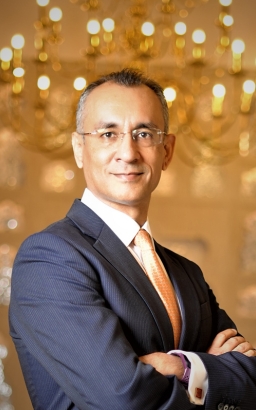
I think India’s emergence as the fastest-growing large economy can be best described in the words of Hemingway, ‘Gradually and then suddenly.’ This story has been long in the making. India started its journey of liberalisation in 1992, and in the past 30 years, India’s economy has grown on average by 6.5%. Unaffected by political changes at home or globally, the Indian steam engine rolls on, powered by sweat, dreams, and the smiles of millions of middle-class Indians.
While India’s saga is exemplified by domestic consumption, China’s growth has been primarily engineered by the state apparatus. Think of India as the organic, fertiliser-free apple while China is the genetically modified, lab-produced version. Thus, the Indian apple may not be as pretty or as big, but it is wholesome in the long run. Growth that is forced, top-down, rarely endures, as we are discovering in China. As global nervousness about China increases, the investing community is waking up to India’s predictable bottom-up growth.
 Of course not. It is the main driver, though. Having millions of upwardly mobile, computer-literate, English-speaking college graduates creates a fertile ecosystem for long-term growth. Now, India is not only the most populous country, but also one of the youngest. India’s average age is 28 while that of China is 38. In Europe it’s 42, while Japan’s average age is 48. Quite simply, youth translates into greater consumption. To mix metaphors, India’s secret sauce is its fountain of youth.
Of course not. It is the main driver, though. Having millions of upwardly mobile, computer-literate, English-speaking college graduates creates a fertile ecosystem for long-term growth. Now, India is not only the most populous country, but also one of the youngest. India’s average age is 28 while that of China is 38. In Europe it’s 42, while Japan’s average age is 48. Quite simply, youth translates into greater consumption. To mix metaphors, India’s secret sauce is its fountain of youth.
The other differentiator is that India is seen as a friendly nation in the polarising global narrative of democracy versus autocracy, capitalism versus communism, freedom versus bondage or, quite simply, good versus evil. In such debates, India is acknowledged as a sensible voice of reason, more aligned with the West. India has the structures, laws and frameworks of a progressive liberal democracy – an independent central bank, an independent judiciary, freedom of speech, improving scores on human rights, ease of doing business and innovation.
The internet revolution has played to India’s strengths in creating a vibrant start-up culture. There are three key factors behind this:
Talent – India produces the largest number of software engineers in the world.
Tech – India’s digital architecture, low cost of data and unique biometric identification.
Scale – Hundreds of millions of people are accustomed to transacting on their phones.
Over the past few decades, Indian engineers have distinguished themselves in global tech companies. In the aftermath of the financial crisis of 2008, many such professionals foresaw the opportunity and returned to India to take a plunge in entrepreneurship. The venture capital funds soon followed and even the government created supportive policies. The combination has triggered an epidemic of disruptive and innovative digital businesses.
Fundamentally, innovation seeks to raise the standard of living and India, being a low-income country, offers more opportunities at scale than the developed West.
Smart technocrats have innovated across the board. Even the government has caught the bug.
Space – Indian Space Research Organisation (ISRO) has achieved remarkable feats in space exploration at significantly lower costs than other space agencies.
Pharmaceuticals – India is a global leader in the production of high-quality, low-cost generic medicines, making life-saving drugs accessible to millions around the world.
Unique Payment Infrastructure – UPI enables instant, real-time bank-to-bank transactions and driving financial inclusion.
Aadhaar Biometric Identification System – The world’s largest biometric identification system has revolutionised the way Indian citizens access government services, subsidies and benefits.
Education – Indian EdTech companies have developed cost-effective educational solutions, offering quality education at affordable prices.
Sure, some of the interesting companies we like are:
Nazara Technologies Limited – Gaming across various genres, including eSports and gamified learning.
KPIT Technologies Limited – Automotive software for electric vehicles and autonomous driving.
Borosil Renewables Limited – Solar glass manufacturing for enhanced energy efficiency.
Info Edge (India) Ltd – Online job search (Naukri.com) and real estate (99acres.com) markets using artificial intelligence.
Syngene International Ltd – Integrated drug discovery and development for global biopharma clients.
Praj Industries Limited – Bioenergy, water treatment, second-generation bioethanol technologies.
PB Fintech Limited – Online aggregation platforms for insurance and lending.
MTAR Technologies Limited – Precision engineering for aerospace, defence, nuclear, and clean energy.
There are a whole host of global VC funds that have private equity investments in India. In the listed equity space, there are many Ucits funds. Our flagship fund, the UTI India Dynamic Equity Fund, follows an all-cap quality-growth strategy.
Last year, we launched another Ucits fund, the UTI India Innovation Fund, which is a concentrated portfolio of newly listed disruptive, innovative companies.
Both funds are Article 8 as per SFDR and cater to investors with different risk-return profiles.
© 2023 funds europe

